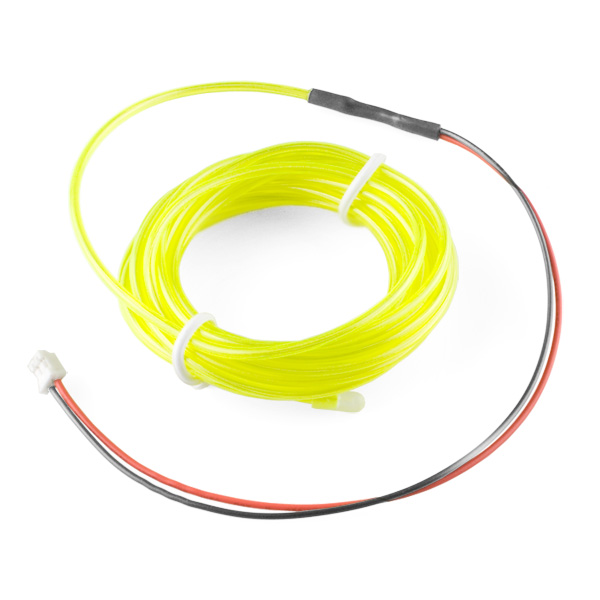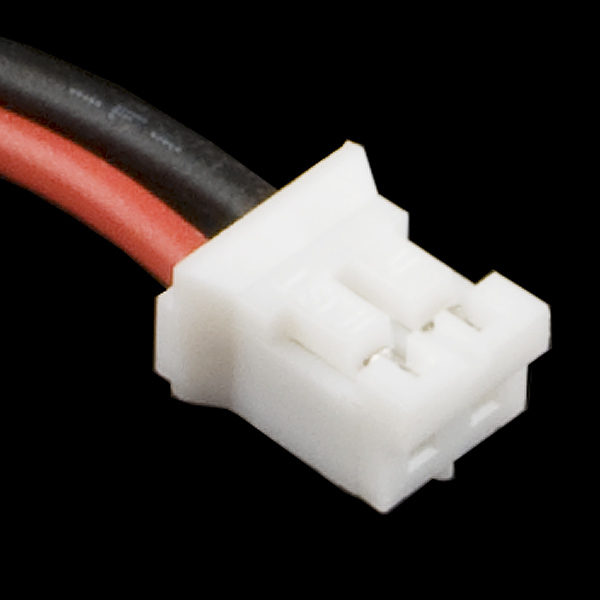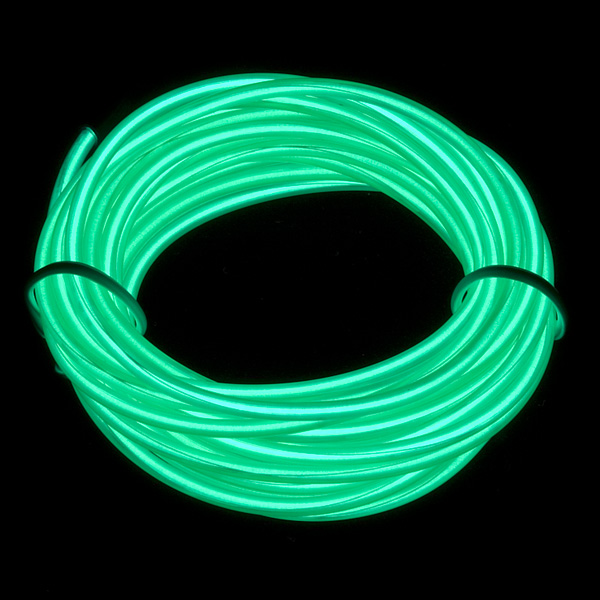EL Wire - Fluorescent-Green 3m
EL wire, or electroluminescent wire, is a flexible wire coated in phosphor. Apply the appropriate voltage and it lights up! It looks a lot like a thin flexible neon tube. They come in many bright colors (check below for other colors) and can be driven pretty easily with an inverter. Check below for compatible inverters as well.
This particular wire glows fluorescent green and is 3m (almost 10 feet) in length, 2.3mm in diameter and is terminated with a JST PH connector. This connector works directly with our two driver boards, the El Escudo and the EL Sequencer. Or, you can wire them directly into the output of an inverter.
(The video states they are 6 foot in length, but they are actually 10 feet in length)
EL Wire - Fluorescent-Green 3m Product Help and Resources
Getting Started with Electroluminescent (EL) Wire
July 13, 2018
This guide will help you get started with electroluminescent (EL) wire, tape, panel, chasing wire, and bendable wire to let your project glow!
EL Sequencer/Escudo Dos Hookup Guide
December 3, 2015
A basic guide to getting started with the SparkFun EL Sequencer and Escudo Dos to control electroluminescence (EL) wire, panels, and strips.
Heartbeat Straight Jacket
June 4, 2009
An EL project that displays one person's heartbeat on another person's costume.
EL Wire Hoodie
October 24, 2018
In this tutorial, we will sew standard electroluminescent (EL) wire to a hoodie.
EL Wire Pants
July 18, 2019
In this tutorial, we will sew standard electroluminescent (EL) wire to a pair of pants.
Core Skill: Electrical Prototyping
If it requires power, you need to know how much, what all the pins do, and how to hook it up. You may need to reference datasheets, schematics, and know the ins and outs of electronics.
Skill Level: Rookie - You may be required to know a bit more about the component, such as orientation, or how to hook it up, in addition to power requirements. You will need to understand polarized components.
See all skill levels
Comments
Looking for answers to technical questions?
We welcome your comments and suggestions below. However, if you are looking for solutions to technical questions please see our Technical Assistance page.
Customer Reviews
No reviews yet.




I've tried Googling and found conflicting answers; can EL Wire be cut to length?
If I correctly understand how these things work, it should be fine, but the shorter the wire, the brighter it glows, and the shorter it's lifespan. This I would be fine with, as I'm thinking of only trimming the wires a bit.
However, some websites suggest, that cutting the wire would be like sawing a fluorescent tube in half, and that I should just try looking for wires in leghts that suit my project.
Can someone put my mind at ease before I place my order?
While it is possible to cut EL wire to length, it's a bit more complicated than just snipping the end and involves some pretty precise soldering of the two fine wires to the inner copper core wire.
Here's a good site with some details on EL wire specifics: http://www.elwire.com/faq/faq.html
And a great image of the physical structure of EL wire can be found here: http://en.wikipedia.org/wiki/Electroluminescent_wire
No! Don't solder the fine wires to the inner core! Never!
When you cut them shorter, it will work %80 of the time first try. The only reason it wouldn't work is if the fine wires got shorted to the main wire. Steps should be taken to ensure this shorting does not happen and is the only "complicated" part.
Granted, at the end it gets power, the fine wires are annoying to solder.
The fine wires aren't too bad if your wrap a bit of copper tape around the outer sleeve, and solder the fine wires to that. Solder your lead onto the copper tape. For the other lead you have to scrape the phosphorus coating off of the inner core, but once you do it's easy to solder to. Shrink wrap the whole thing and bob's your uncle.
Can anyone characterize the flexibility of EL wire? Is it possible to create a complex outline or shape? Does it hold it's shape at all? Thank you.
the guys at farnell said it was 30 degrees if i'm not mistaken..
It doesn't hold shape, but is pretty flexible. I have a video getting posted soon that will show a bit of how it flexes.
One serious gap:
What's "the appropriate voltage" and what current is drawn at that voltage?
Two picky things:
1) Is this wire "flourescent" (emitting ground grain) or "fluorescent"?
2) Has the meter shrunk or the foot expanded? The last time I checked, 3 m was a bit short of 10 feet.
Eric
This wire works at 110VAC. Check the associated inverter below. We will get a full datasheet soon, but it works with all the other products we carry just fine.
1.) I think you answered your own question.
2.) I think you answered your question once again :-)